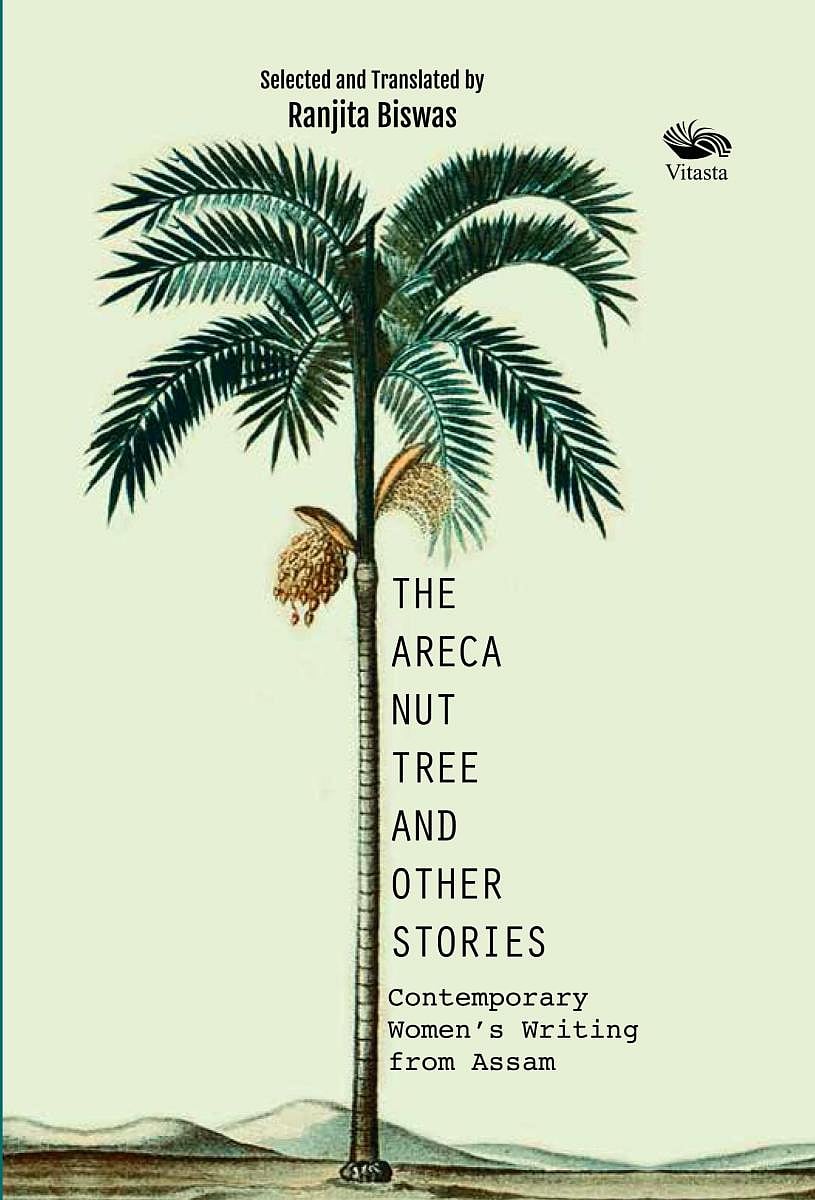
Think Assam and the associated words that spring to mind are tea, tribes, and the Brahmaputra. Those with a higher general knowledge quotient may add insurgency to the list, but it would be a rare person who would include short stories. Yet, this is a genre in which women writers from the region, such as Indira Goswami, Arupa Patangia Kalita, and others, have, for the past several decades, carved out a distinct niche. In The Areca Nut Tree and Other Stories, award-winning translator Ranjita Biswas brings together short fiction written by 14 women from the last decade of the 20th century.
Comparing the position of Assamese women with the rest of the country, the foreword identifies it as ‘more elevated due to the influence of liberal tribal society and its close association with Assamese culture, and also, the association of western education and culture over time.’ It goes on to say that the harbingers of new trends in Assamese literature are: ‘First, the liberalisation of the economy at the beginning of the 1990s and the social unrest following globalisation, and second, the failure of regionalism that led to the rise of a brand of ultra-regionalism and armed rebellion, both guided by the ideological principle of projecting the Assamese people as a community that has perpetually been neglected, and forever at the receiving end of the powers that be.’
Linguistic rhythms
Surprisingly, not one of the stories is set against the backdrop of the many separatist movements that made headlines in mainstream media in their time. Yet, Assam itself remains the milieu, the immutability of its rural landscapes and linguistic rhythms lending themselves to a bouquet of storytelling styles that carry a local flavour while being contemporary in their concerns.
Though several of the stories depict the plight of women, they cannot be placed under the rubric of ‘women-centric’. Rather, they should be seen as realistic exposés of a universal human condition in which the inequality between men and women is one of several societal injustices.
The first and the eponymous tale of the collection, by Manika Devee, critiques the frequent theme of domestic violence. It shows the passive backing such acts get from the other women in the family. Patriarchy is equally brutalising for men and women, the story suggests, but a return to simple humanity is also possible. Violence remains the refrain in The Bhuichampa Flower by Ruplekha Devi; it is a story set in the precincts of the Kamakhya Devi temple, about an underage girl tricked into sexual slavery and her spiritual transformation into a sanyasin. To quote her, ‘I lost everything in your modern world. Now the old, ancient world has given me back everything — as a woman, as a source of energy.’
Loneliness and emptiness are twin aspects of human relationships that show up in modern fiction. Here, we find them in a number of stories: Dunoi by Kavyashree Mahanta is a poignant tale about a mentally-challenged youth and his search for a friend.
The Marketplace (Gayatri Doley) portrays a tough-minded woman holding onto a tiny plot of land that her land-grabbing uncle wants. In The Flight to Freedom (Geetali Borah), a man desperately seeks the return of his lost love in frequent sexual escapades. Mini by Bonti Senchowa is another outstanding story that shines an unrelenting light on the dark theme of child sexual abuse — in a respectable family setting — and makes the point that voicing the ‘forbidden’ is the first step to preventing it.
While sombre themes predominate, a mild touch of irony is seen in a few stories. In The Morning Walk (Maini Mahanta), a long-married retiree finds an escape from the dullness of daily routine when his wife slips on the bathroom floor; in Reflection (Leena Sarma) a young woman’s obsession with her cat is transferred to her newly-wed husband.
There are infinite ways of telling stories. In this collection, the simple, linear, concise narratives seem to work better than those that employ literary devices such as shifts in time and viewpoints, as the latter does not offer the same ease of reading. Happily, the majority falls in the first category. Overall, a recommended read.